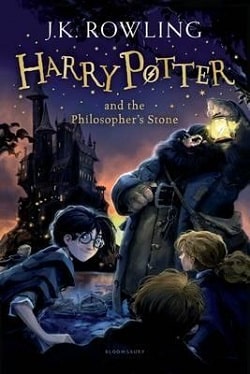It looked like a model from a toy shop, he said; propeller-driven, with its power unit on the back. More strange still, it had no pilot, but rumors in the canteen insisted the creature had amazing cameras that could see for miles and penetrate night, cloud and fog.
Relayed to the cartel, the ramblings of the corporal could mean only one thing; the Americans were flying UAVs out of Malambo to spy on all seacraft leaving the Caribbean coast of Colombia.
A week later, there was an attack on Malambo base. For his assault troops, the Don did not employ his Enforcer, still nursing his bullet-shattered left hand. He used his private army of former guerrillas of the FARC terrorist group, still commanded by jungle veteran Rodrigo Pérez.
The attack was at night, and the assault group swept through the main gate and headed straight for the U.S. compound at the center of the base. Five Colombian soldiers died around the gate, but the shots alerted the U.S. Marine unit guarding the inner sanctum just in time.
In a suicidal wave, the attackers breached the high wall but were cut down trying to get to the hangar where the UAV was stored. The two FARC men who got inside just before they died were disappointed. Michelle was two hundred miles out to sea, turning lazily as she jammed two go-fasts while they were being intercepted by SEALs from the Chesapeake.
Apart from some pockmarks in the concrete, no damage was done to the hangar or the workshops. No U.S. Marines died, and just five Colombian soldiers. There were over seventy FARC bodies found in the morning. Out at sea, two more go-fasts vanished without a trace, their crews were lodged in the forward brig below the waterline and four tons of cocaine impounded.
But twenty-four hours later, the Cobra learned the cartel knew about Michelle. What Don Diego did not know was the existence of the second UAV flying out of an obscure Brazilian island.
With its guidance, Major Mendoza shot down four more cocaine traffickers in midair. This was despite the switch by the cartel from Rancho Boa Vista to another refueling hacienda even deeper in the bush. Four of the staff at Boa Vista had been lengthily tortured by El Animal and his crew when it was suspected they must be the source of the flight-plan leaks.
At the end of the month, a Brazilian financier, holidaying on Fernando de Noronha, spoke on the phone to his brother in Rio about a strange toy airplane the Americans were flying out of the far side of the airport. Two days later, there was an excited article in O Globo, the morning daily, and the second story was out in the open.
But the offshore island was beyond the reach even of the Don’s FARC troopers; the Malambo base was strengthened, and the two UAVs went on flying. In neighboring Venezuela, hard-left president Hugo Chavez, who, despite his high moral tone, had allowed his country and its northern coast to become a major departure point for cocaine, fulminated his rage but could do little else.
Believing there might be some kind of a curse on Guinea-Bissau, pilots prepared to run the Atlantic gauntlet had insisted on flying to other destinations. The four shot down in December had been heading for Guinea-Conakry, Liberia and Sierra Leone, where they were supposed to drop their cargoes from midair, but low, over waiting fishing boats. It availed nothing because none arrived.
When th
e changing of the refueling stop from Boa Vista to a new ranch, and the switching of the destinations failed to work, the supply of volunteer pilots simply dried up no matter the money offered. The Atlantic run became known in crew rooms across Colombia and Venezuela as “los vuelos de la muerte”—the flights of death.
Detective work in Europe, with the help of Eberhardt Milch, had revealed the small stenciled code of the double circles and Maltese cross on certain steel sea containers. These had been traced back to the Suriname capital and port of Paramaribo and thence upcountry to the banana plantation from which they had all come. With American funding and help, that was raided and closed down.
A frantic Alfredo Suárez, desperately seeking to please Don Diego, realized that no freight ship had been intercepted in the Pacific, and, as Colombia has a coast on both oceans, he switched a large proportion of his dispatches away from the Caribbean side to the western rim.
Michelle spotted the change when a tramp steamer in her memory bank, one of those on the fast-diminishing Cortez list, was seen heading north past the western coast of Panama. It was too late to intercept it, but it was traced back to the Colombian Pacific port of Tumaco.
In mid-December, Don Diego Esteban agreed to receive an emissary from one of the cartel’s biggest and therefore most reliable European clients. He rarely if ever received anyone personally from outside his small coterie of fellow Colombians, but his head of merchandising, José-María Largo, responsible for client relationships worldwide, had entreated him.
Immense precautions were taken to ensure that the two Europeans, important though they were, had no idea in which hacienda the reception took place. There was no language problem; the two men were Spanish and both from Galicia.
This storm-lashed northwestern province of Spain has long been the smuggling star performer of the old European kingdom. It has an ancient tradition of producing seafarers who can take on any ocean, no matter how wild. They say seawater flows in the blood along that wild coast from Ferrol to Vigo, indented by a thousand creeks and inlets, home to a hundred fishing villages.
Another tradition is a cavalier attitude to the unwanted attentions of customs and excise men. Smugglers have often been seen in a romantic light, but there is nothing lighthearted in the ruthlessness with which smugglers fight the authorities and punish squealers. With the rise of the drug culture in Europe, Galicia emerged as one of the main centers.
For years, two gangs have dominated the cocaine industry of Galicia—the Charlins and the Los Caneos. Formerly allies, they had a major falling-out and blood feud in the nineties but had recently resolved their differences and unified again into an alliance. It was a deputy from each wing that had flown to Colombia to protest to Don Diego. He had agreed to receive them because of the long and strong links between Latin America and Galicia, a heritage of many Galician sailors who settled in the New World long ago, and the size of the Galicians’ habitual orders for cocaine.
The visitors were not happy. It had been two of their own whom Chief Inspector Paco Ortega had seized with two suitcases containing €10 million of laundered five-hundred-euro notes. This disaster, the Galicians maintained, had stemmed from a security failure by the lawyer Julio Luz, now looking at twenty years in a Spanish jail and reportedly singing like a canary in a plea-bargaining deal.
Don Diego listened in icy silence. More than anything else on earth, he hated to be humiliated, and now he had to sit and be lectured to, he fumed, by these two peons from Coruña. Worse, they were right. The fault was with Luz. If the fool had had family, they would have paid in pain for the absent betrayer. But the Galicians had more.
Their principal clients were the British gangs who imported cocaine into the UK. Forty percent of British cocaine came via Galicia, and these supplies came up from West Africa and entirely by sea. Those portions of the trade from West Africa that came overland to the coast between Morocco and Libya before crossing to Southern Europe went to other gangs. The Galicians depended on the marine traffic, and it had dried up.
The strongly implied question was: what are you going to do about it? He graciously bade his visitors to take wine in the sun while he went inside to confer.
How much, he inquired of José-María Largo, are the Galicians worth to us? Too much, admitted Largo. Of the estimated three hundred tons that had to reach Europe every year, the Spanish, which was to say the Galicians, took twenty percent, or sixty tons. The only ones bigger were the Italian Ndrangheta, bigger even than the camorra of Naples and the Cosa Nostra of Sicily.
“We need them, Don Diego. Suárez needs to take special measures to keep them satisfied.”
Before his amalgamation of the mini-cartels into the giant Brotherhood, the Galicians had mainly secured their supplies from the Norte del Valle cartel run by Montoya, now in an American jail. Norte del Valle had been the last of the independents to succumb to amalgamation, but they still produced their own supplies. If the powerful Galicians went back to their original provider, others might follow, provoking the steady breakup of his empire. Don Diego returned to the terrace.
“Señores,” he told them. “You have the word of Don Diego Esteban. Your supplies will resume.”
It was easier said than done. Suárez’s switch of method from thousands of human mules swallowing up to a kilogram each, or carrying two or three kilos in a suitcase and hoping to get through airports intact, had seemed sensible at the time. The new invisible X-ray machines that penetrated clothing and body fat had certainly made stomach carrying a lost cause. Furthermore, the intensive security in baggage-handling halls, which he put down to the Islamic fundamentalists whom he cursed every day of his life, had sent suitcase interception through the roof. Big and few, had seemed a sensible new direction. But since July, there had been a welter of interceptions and disappearances, and each loss had been between one and twelve tons.















